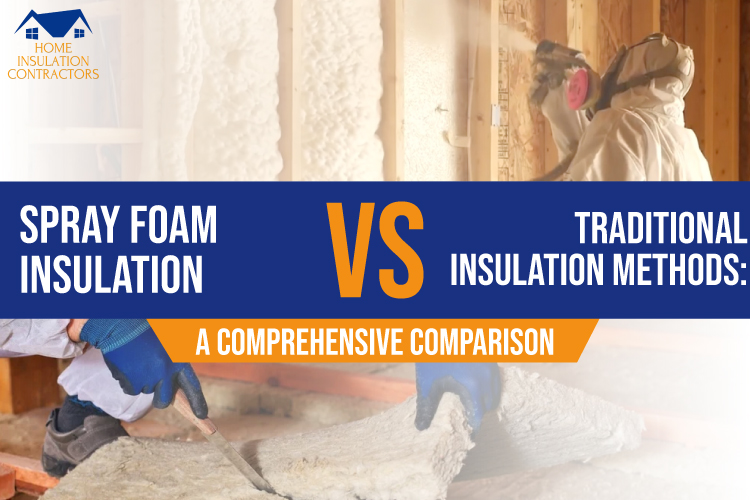In the realm of home insulation, choices abound. From the modern marvel of spray foam insulation to traditional stalwarts like fiberglass and mineral wool, homeowners are often spoilt for choice. But which insulation method truly stands out? Let’s delve into a detailed comparison, with a special focus on the benefits of open cell spray foam insulation.
Spray Foam Insulation vs. Traditional Methods: The Basics
Before diving into the specifics, let’s understand the basics of each insulation method:
- Spray Foam Insulation: A liquid foam that expands upon application, filling gaps, cracks, and crevices to create a tight seal. It comes in two main types: open cell and closed cell. The beauty of spray foam lies in its adaptability. Whether you’re insulating a new build or retrofitting an older home, spray foam can seamlessly integrate.
- Fiberglass: Made from fine glass fibers, it’s a popular insulation choice available in rolls or batts. It has been a go-to insulation method for decades, known for its lightweight nature and ease of installation.
- Mineral Wool: Made from molten glass, stone, or slag, it’s known for its fire-resistant properties. Often praised for its acoustic insulation properties, mineral wool is a heavyweight in the insulation world.
Cost-effectiveness: Getting the Most Bang for Your Buck
- Spray Foam Insulation: While the initial investment for spray foam insulation, especially open cell, might be higher than traditional methods, its long-term benefits in terms of energy savings make it a cost-effective choice in the long run. Moreover, the cost savings extend beyond just energy bills. By creating a tight seal, spray foam can also reduce potential repair costs associated with moisture damage or pest invasions.
- Fiberglass: Generally cheaper upfront, but potential gaps and the possibility of settling over time can lead to increased energy costs. Additionally, over the years, fiberglass might need replacements or top-ups, adding to the overall cost.
- Mineral Wool: Slightly more expensive than fiberglass but offers better fire resistance. However, like fiberglass, it can have gaps leading to reduced efficiency. Its dense nature also provides excellent soundproofing, adding another layer of benefit.
Durability: Which Lasts Longer?
- Spray Foam Insulation: Once applied, spray foam insulation, especially open cell, maintains its integrity for years, ensuring long-term insulation benefits without the need for frequent replacements. Its resistance to common issues like mold, pests, and moisture further enhances its durability.
- Fiberglass: Over time, fiberglass can settle or degrade, reducing its insulating properties. It’s also susceptible to damage from pests, which can compromise its effectiveness.
- Mineral Wool: While durable, it can be susceptible to moisture, which can reduce its effectiveness. However, its fire-resistant properties ensure added safety, especially in areas prone to wildfires.
Energy Efficiency: Keeping Your Home Comfortable
- Spray Foam Insulation: Its expansive nature ensures a comprehensive seal, minimizing air leaks. Open cell spray foam, being porous, also offers breathability, ensuring moisture doesn’t get trapped. This balance between sealing and breathability ensures optimal energy efficiency.
- Fiberglass: While it provides decent insulation, potential gaps can lead to air leaks, reducing energy efficiency. However, when installed correctly, it can still offer commendable insulation benefits.
- Mineral Wool: Offers good insulation but, like fiberglass, can have gaps that reduce its overall efficiency. Its dense composition also aids in maintaining a consistent indoor temperature.
The Superiority of Spray Foam Insulation
While all insulation methods have their merits, spray foam insulation, especially open cell, stands out for several reasons:
- Comprehensive Coverage: Its ability to expand ensures every nook and cranny is covered, providing superior insulation.
- Eco-friendly: Modern open cell spray foams are formulated with the environment in mind, making them a sustainable choice. As the UK moves towards greener building practices, spray foam insulation aligns perfectly with these goals.
- Long-term Savings: The energy efficiency of open cell spray foam translates to significant savings on utility bills. Over a decade, these savings can amount to thousands of pounds.
Conclusion
When pitted against traditional insulation methods, spray foam insulation, especially open cell, emerges as the clear winner. Its cost-effectiveness, durability, and superior energy efficiency make it the ideal choice for homeowners seeking the best insulation solution. For those looking to make an eco-friendly choice that offers long-term benefits, open cell spray foam insulation is the way to go. As we look towards a future where sustainability and energy efficiency are paramount, spray foam insulation stands tall as the insulation method of the future.


